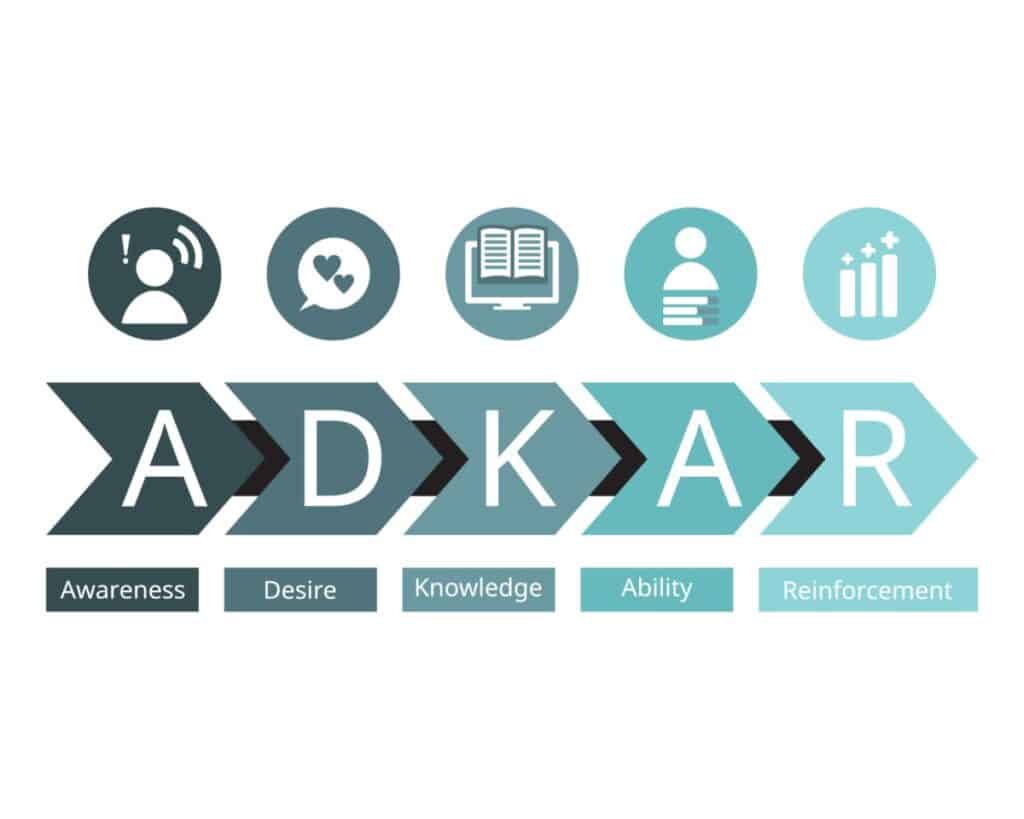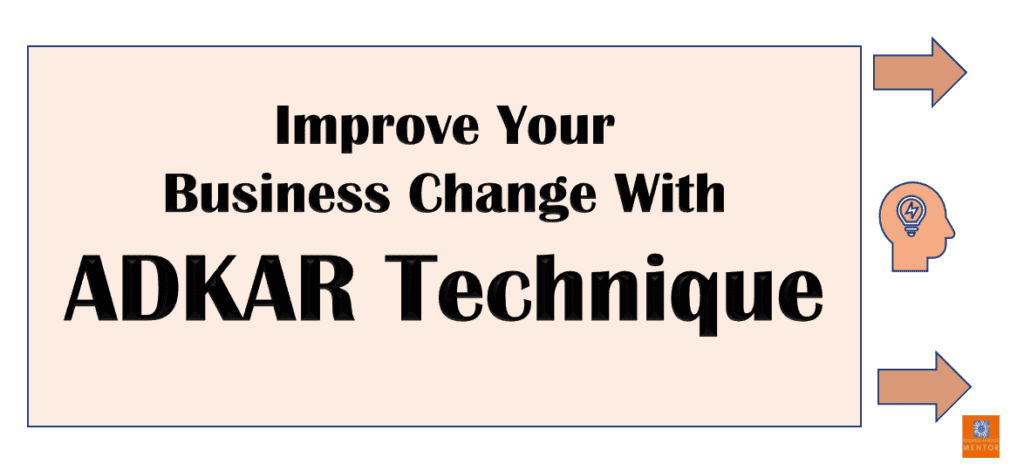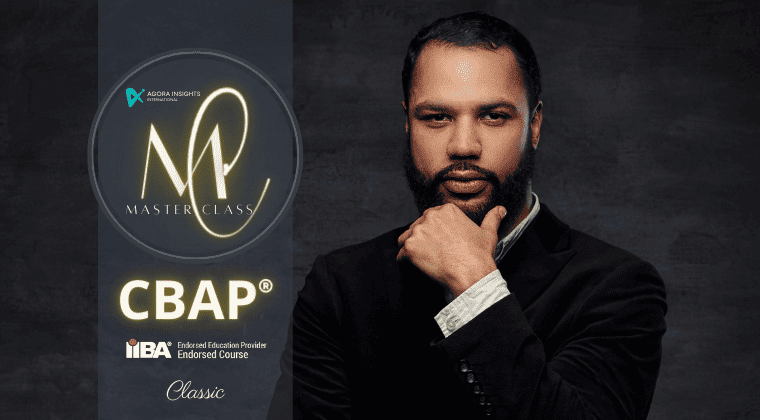In modern business, change is not only a way of moving forward, but a necessity if the organisation is to survive, let alone thrive in the market. To gain an edge over the competition, businesses must constantly adapt to an ever-changing environment and continuously adjust and improve their processes.
However, change is rarely easy even if you’re just an individual trying to do something different with your personal life. Of course, the transformation of massive organisations with numerous employees is even harder. Commonly, any attempt to bring the change into the organisation is met with employee resistance (the types of emotions that employees go through in change
Identifying what needs to be changed and how to change it is just the beginning of the process. The people element is probably the most challenging and, at the same time, one of the most crucial components of change. The key to successful change implementation is understanding what makes the change so difficult and why people so often resist it.
Only when these reasons are well understood, it’s possible to gain support among the employees and have them believe and buy into the change process. One of the best instruments organisations can use to guide them through this process is the ADKAR model for change management.
Table of Contents
What is the ADKAR Model of Change?
The ADKAR mode of change management was first designed in the 90s by Jeff Hiatt

The name of the model itself is an acronym representing five stages and key concepts of the change process: Awareness, Desire, Knowledge, Ability, and Reinforcement. In its essence, ADKAR is a fairly simple tool that serves to help change the process. It breaks the process down into five most basic and essential elements, with each of them representing a stage on the successful journey to change.
Unlike most of the other management change models, ADKAR focuses on individual change rather than the change on the level of the whole organisation. It successfully recognises that there can’t be any organisational change without it first happening on the individual level.
The goal of the entire ADKAR model is to help leaders and managers focus their efforts on supporting and coaching their employees within the organisation during the change process so that each individual can accept and get along with the change.
With the help of ADKAR, employees can understand why the change is necessary and how each of them, along with the whole business, will benefit from it. In turn, this will result in driving the organisational change process, making it successful and more efficient, and, ultimately, delivering a positive outcome.

What are the 5 Elements of the ADKAR Model of Change?
In practice, the ADKAR model works by assessing organisations and individuals on their readiness to accept and implement change. Each individual is rated for every phase or element of change to provide some idea about their willingness to buy into the organisational change. All five of the steps or building blocks of the change process are named after their desired outcome.
Awareness
The starting point for every change initiative is answering the question of “why” behind the change. The positive outcome of this step is achieving awareness and understanding among everyone about the reason for the change and why it needs to be implemented.
In case employees don’t have a full understanding of the necessity of the change process they will be unmotivated to take part in it and reluctant to accept the future state of the organisation that may come as a result of the change. Needles, to say poor motivation will significantly reduce the chances of the successful outcome of the change process.
In order to create awareness, the management needs too clearly and effectively communicate the reasons for change and ensures that everyone understands them. The reasons for change should be presented from different perspectives and laid out in a way that can make everyone relate to them.
The best way to explain the usefulness of planned initiatives is to use practical examples that can show each employee how the change can benefit them and their work.
Desire
For a change process to be successful, It’s not enough that the employees and members of the organisation just understand the change. They also need to want it to happen. When people are truly interested in seeing the change happen, they will readily offer their support for the process and commit too engaging in change. The employee desire for change comes from answering the question of what’s in it for them and why the change is good for their and organisational future.
To achieve this, managers need to work with their employers to ensure three things. Firstly, workers need to be dissatisfied with the current state of the organisation. Secondly, they should have an understanding that keeping the status quo and rejecting the change can have negative consequences for the organisation’s business and ability to successfully operate and compete in the market.
Lastly, managers need to get employees to be willing to actively participate in the change process. Again, this is best done through practical examples. Employees may not be too interested or concerned that the company’s profits are currently low. However, they will be very concerned and care for the company’s lack of profit if it means lower wages or layoffs.
Knowledge
The third building block of the ADKAR model of change is Knowledge. As a result of a change, many employees will have new or altered job tasks. The implementation of change is of no use if they can’t get that job done.
The knowledge element of ADKAR implies both the knowledge needed to participate in the change process and the knowledge of skills and behaviours that will be needed once the change has taken place. For example, a change that involves introducing a new machine or software will require workers to know how to operate and use them.
Lack of knowledge of what to do and how to do it can significantly hinder and even stop the change process, even if people are motivated to go through with it. Therefore, it’s essential to identify potential knowledge gaps between the current and future state of the organisation and help employees gain those necessary skills and knowledge. Depending on how big this knowledge gap is, this can be done through social learning, formal education and training, coaching and mentoring, or workshops.
Ability
Knowledge of how something is done doesn’t necessarily translate to doing it in practice. In this step of the ADKAR model, an individual employee is supposed to demonstrate newly acquired skills and behaviours. The model makes a clear distinction between theory (knowledge) and practice (ability)
To build the ability of their employees to actually do something that’s required of them, managers must foster hands-on learning and allow individuals with practical training where they can work on their abilities. The employees should also be encouraged to believe in their current abilities and given recognition as this will motivate them, even more, to further develop their practical skills.
Ultimately, the process should lead to highly-trained employees capable of handling their tasks and thus valuable contributors to the future state of the organisation and the change process itself.
Reinforcement
The change process is not completed until there are mechanisms in place to ensure the sustainability of the desired future state of the organisation. This involves, among other things, measuring and rewarding the performance to ensure the change is sustained.
Furthermore, the reinforcement may involve the installation of a mechanism for feedback and evaluation, as well as necessary audits to make sure that the change adoption is maintained at a satisfactory level. Also, this allows for quick course correction in case anything goes wrong.
While the reinforcement is, obviously, an ongoing process, it will require some extra focus in the beginning to make sure that all the above-mentioned steps are in place. This is the only way to ensure that the positive effects of change will be long-lasting and kept on a satisfactory level.

What are the Advantages and Disadvantages of the ADKAR Model of Change ?
As you can see, implementing the ADKAR model during the change process can bring multiple benefits to the organisation. However, there are some downsides as well.
Advantages of the ADKAR Model of Change
- Instead of tasks, the focus of the ADKAR model is on the outcome. So, rather than dealing with what needs to be done, the focal point of ADKAR is on achieving the desired results.
- Through ADKAR model implementation, organisations can measure the progress of change. Every step of the model provides information on individual participation in the change process and helps identify potential gaps that need to be rectified.
- The ADKAR model puts people in the centre of attention and correctly recognises that it’s them who facilitate and drive the change.
- The model eases change management by providing a clear and precise checklist of what needs to be done.
Disadvantages of the ADKAR Model of Change
- To some extent, the ADKAR model ignores how complex the change can be and the need for long-term change vision and strategy.
- Works better for small-scale change initiatives, as a simple focus on the individual is often not enough to deliver the full desired outcome of change.


